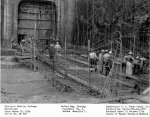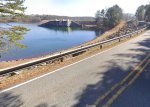natureman
Senior Member
So, I recently came across over 700 construction photo of Lake Lanier and Buford Dam. I posted them with narrative over on a Facebook group which I can't / shouldn't post a link to because of bad language. It was in multiple parts. I thought I would see if there was any interest here.
Part I. Some historic photos of Lake Lanier construction. Here is a series of the forebay/water intake structure for the Powerhouse. Just the top part is visible today.




Part I. Some historic photos of Lake Lanier construction. Here is a series of the forebay/water intake structure for the Powerhouse. Just the top part is visible today.



Attachments
Last edited:



















